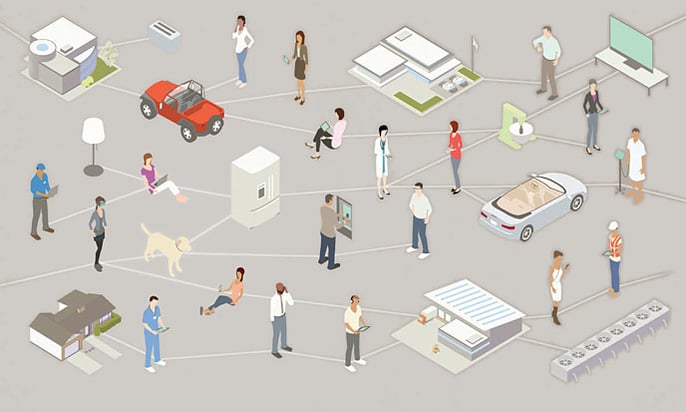'Things' can only get better

The Internet of Things is all over the news. But inanimate connectivity is not new, it’s been happening for quite some time. ANT Telecom’s Managing Director, Paul Smith explains how businesses don’t need to wait for IoT to reap the benefits of connectivity.
The Internet of Things (IoT) is the zeitgeist of the moment. The concept, hailed as the ‘dawn of inanimate consciousness’, uses embedded sensors to awaken physical objects and corral them into a connected network that can exchange data and automate activity. It’s become an epiphany for efficiency, productivity and innovation - and the business world is lapping it up. Gartner predicts that more than 26 billion ‘things’ will be connected by 2020. And we’re a fifth of the way there already. With pervasive technology taking over right under our noses, it’s no wonder that commentators are calling IoT the ‘next Industrial Revolution’. But in reality, the revolution started some time ago.
Here’s the thing. Just as the Internet had a life before Tim Berners-Lee invented the world wide web, its thing-based cousin was quietly humming in the background long before IoT attained buzz phrase status in 2013. The world has actually been connecting inanimate objects for years – and using the intelligence captured through the process to drive efficiency, accelerate activity and increase output.
The practical application of connectivity tools is all around us. Immersive technology is connecting factory machines to alert engineers when a unit malfunctions. In healthcare settings, smart technology monitors refrigeration to keep high-value medicines at regulated temperatures - and informs healthcare professionals when potential problems arise. In hazardous remote environments or manufacturing plants, intuitive technologies are being connected to Alarm Messaging Applications to protect lone workers, accelerate response and mitigate risk.
These applications - and there are many more examples - are long established and use simple and cost-effective everyday technologies. They don’t require sophisticated IoT architecture, painful implementation programmes or significant investment. And they work.
Make no mistake, IoT is an exciting prospect that will transform the way we work. Its central promise – ubiquitous connectivity – will undoubtedly deliver major gains. But for businesses seeking to safeguard their workers, improve productivity and find greater operational efficiencies, connectivity is not the issue (it is very likely this can be achieved now and cost effectively with what is already in situ). It’s what you do with it that counts.
The challenge for companies is to move beyond connectivity and focus on the much more critical aspect of escalation. Why? A car alarm going off in the middle of the night is of no use if no-one responds to it. Whether you’re using technology to improve lone worker protection, maintain business continuity or alert mechanical failure, the most effective systems are those that are built to include robust and responsive processes for escalation management and audit capability. Connectivity is only the starting point.
The development of intuitive systems to protect operations and human resources does not require a technological revolution or wholesale investment in the Internet of Things. But it does require taking a considered, pragmatic and holistic approach to designing the most appropriate solution to suit individual business needs. The most successful organisations will be those that work with an experienced and trusted communications partner to help them join up the dots. In a world of connectivity, that’s one connection that really is worth making!






